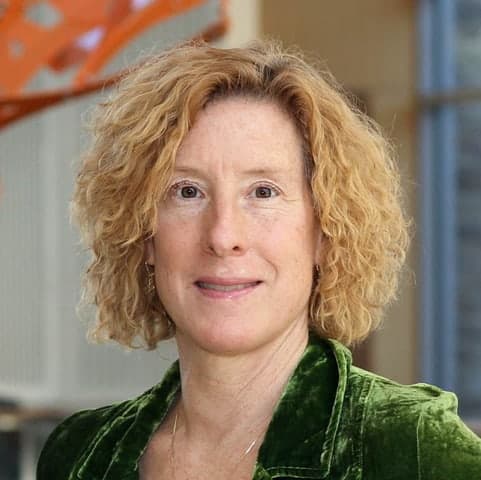
L. Cate Brinson is currently the Sharon C and Harold L Yoh III Professor of Engineering and the Donald M Alstadt Department Chair of the Mechanical Engineering and Materials Science Department at Duke University.
After receiving her Ph.D. in 1990 from Caltech, Dr. Brinson performed postdoctoral studies in Germany at the DLR and began her academic career at Northwestern University in 1992, serving in many roles, including as Department Chair for Mechanical Engineering and an Associate Dean in the McCormick School of Engineering.
Her current research investigations involve characterization of local polymer mechanical behavior under confinement, nanoparticle reinforced polymers, the phase transformation response of shape memory alloys, nano and microscale response of soft biomaterials and additively manufactured polymers, and materials genome informatics research, where investigations span the range of molecular interactions, micromechanics and macroscale behavior.
Dr. Brinson has received a number of awards, including the Nadai Medal of the ASME, the Friedrich Wilhelm Bessel Prize of the Alexander von Humboldt Foundation, the ASME Tom JR Hughes Young Investigator Award, and an NSF CAREER Award; she is a Fellow of the American Association for Advancement of Science, the Society of Engineering Science, the American Society of Mechanical Engineering and the American Academy of Mechanics; and she served as a member of the Defense Science Study Group.
She has given many invited technical lectures on her research and has authored one book and over 160 refereed journal publications. She has over 25000 citations and an h-index of 68 in Google Scholar. Her book has had over 60,000 chapter downloads from the e-version since publication in 2008 and a second edition published in 2015.
She is a member of several professional societies, served 5 years on the Society of Engineering Science Board of Directors, including one year as President of the society, and is a founding member of the Materials Research Data Alliance (MaRDA). She has also been an Associate Editor of the Journal of Intelligent Material Systems and Structures and the Journal of Engineering Materials and Technology, served two terms on the National Materials Advisory Board of the National Academies and has chaired two National Research Council studies.
Working toward Interoperability: Nanomine to Metamine and Ontologies
Data-driven methods can help accelerate materials design given the vast array of past research data. Data resources that hold these research data in a findable, accessible, integratable, and reusable (FAIR) way are essential to the success. NanoMine is an ontology-based, open-source data resource that follows the FAIR principles for the polymer nanocomposite community. During the development of NanoMine, a standalone API service entitled ChemProps was developed to solve the database indexing issue caused by the lack of uniformity in polymer names, which integrates seamlessly into NanoMine platform and enables more interoperability across many polymer data sites.
Beyond being a contribution only to the polymer nanocomposite community with the NanoMine Knowledge Graph, NanoMine has the vision to create the Materials Knowledge Graph as a stable, user-friendly data and knowledge framework for materials through the development of an extensible semantic infrastructure with customized and customizable user templates and semi-automatic curation tools for data entry and associated data validation protocols, along with ontology-enabled design tools and custom user dashboards.
The first sibling of the NanoMine Knowledge Graph under the Materials Knowledge Graph framework is the MetaMine Knowledge Graph, which extends from the NanoMine schema and ontology, which by itself is also an extension of the work done in modeling entirely different domains, including epidemiology and bioinformatics. By building off an existing science ontology (Sematanticscience Integrated Ontology, or SIO), the extension into a related metamaterials domain is smooth, since most of the modeling was done and only a few tasks including how to describe metamaterials geometries, and how to represent modulus tensors are left to be considered.